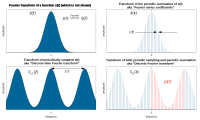
Photo from wikipedia
Considering disturbances, noise, and sensor faults, this article investigates interval estimation for discrete-time Takagi–Sugeno fuzzy systems. To obtain precise estimation results and attenuate disturbances and noise in the system simultaneously,… Click to show full abstract
Considering disturbances, noise, and sensor faults, this article investigates interval estimation for discrete-time Takagi–Sugeno fuzzy systems. To obtain precise estimation results and attenuate disturbances and noise in the system simultaneously, we integrate robust observers based on the $ H_{\infty }$ technique and reachability analysis. Two novel observer gain computation methods are proposed for different purposes. The time-invariant method relaxes the original design conditions by transforming the parameterized linear matrix inequality (LMI) into a series of LMIs to increase computational speed, while the time-varying method employs the parameterized LMI directly and conducts calculation online. Furthermore, reachable set representations for error dynamics are formulated by making use of both time-invariant observer gain and time-varying observer gain. An inverted pendulum system simulation and a comparative numerical simulation are studied to illustrate the effectiveness and superiority of the developed methods.
Journal Title: IEEE Transactions on Fuzzy Systems
Year Published: 2022
Link to full text (if available)
Share on Social Media: Sign Up to like & get
recommendations!